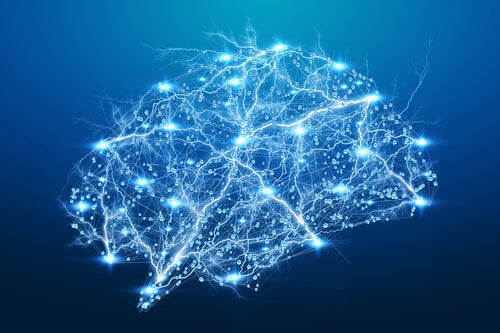Marcelo Ceberio: "Gaining Neuroplasticity Through Therapy Is Possible"

Marcelo Ceberio is one of the most outstanding figures in psychology. He’s written numerous works, scientific articles, and more than 25 books such as Heaven Can Wait, Superheroes Also Go To Therapy, or Cinderella & The Ugly Ducklings.
Moreover, if there’s one thing this Argentine therapist is known for is the fact that he’s one of the maximum representatives of the systemic approach. Marcelo Ceberio studied this model at the Mental Research Institute in Palo Alto, California. In fact, that’s where he’s currently working as a professor and researcher.
We had the great pleasure of interviewing Marcelo Ceberio to talk about a very interesting topic: neuroplasticity and its relationship with psychotherapy.
Marcelo Ceberio: Therapy and Neuroplasticity
Our brain is still mysterious. This organ weighs a little more than three pounds and entails sophisticated neuronal connections. Some people may not be aware of this, but everything we do or think is capable of changing it. That’s something we call neuroplasticity. It refers to the brain’s ability to change both its physical structure or functional organization based on our behavior.
Now, this wasn’t valid until recently. Actually, some believed that, when humans reached a certain age, it was impossible for their brain to create new neural networks. However, as of now, important figures such as Dr. Álvaro Pascual Leone are trying to understand these mechanisms to cause changes in patients.
Meanwhile, Marcelo Ceberio reveals how the therapeutic process itself favors neuroplasticity in any type of psychological approach. That being said, this is a hopeful tool that could allow us to reconstruct meanings and create new thought patterns that may favor the client’s well-being. Marcelo Ceberio explained it to us in this interesting interview.

Q. #1. Marcelo Ceberio, what’s neuroplasticity?
To think that not long ago people believed that creating new neural networks was impossible! As of today, we know that up until our last moment on Earth we continue to create networks and networks and networks and more networks! Neuroplastic networks imply a chain of partner neurons that enhance one another.
It’s like a neuronal domino effect, in which the nerve cells operate in chains, working all together. If the environment is prone to change, we need behavioral plasticity in order to be able to adapt ourselves. In addition to it, we also need a neuronal association that produces a network reaction involving emotions, reflections, and actions.
This plasticity is a property of biological systems, which allows them to adapt to changes in the environment so they can survive. Therefore, learning processes and memory are events that favor flexibility; and the more plastic the nervous system is, the greater the organism’s learning capacity will be.
At this point, we must remember that Darwinian basic emotions (joy, sadness, disgust, fear, surprise, and anger) have made adaptation and survival possible in different.
Q. #2: How can we gain neuroplasticity?
Part of the human communication process is shaped through a series of actions, feedback, and interactions that produce numerous constructs full of different meanings. However, these meanings also produce said circuits, so it’s basically an endless system looping over and over again.
Nonetheless, when actions (including speech) are poured into the context, they immediately produce encodings of the interlocutor. This is why answers in interlocution arise as a product of personal attributional constructions.
Everything (by this, I’m referring to subjects, situations, and objects) we experience is part of a category. Now, categories are cognitive boxes that carry particular semantics. These categories group things into separate classes; and, at the same time, a category can be part of another category and integrate several categories. For example, a chair falls into the category of furniture, but at the same time, a chair can be part of a category that brings together different styles of chairs.
We perceptively draw distinctions. In other words, we focus or remain attentive to certain things that impact us. Now, many of those things are included in categories that join together in a network with one or several meanings. In this sense, categorical networks have their counterparts in neuroplastic networks.
Perseveration in actions developed under the same constructs of meaning, habits, the habit of carrying out actions under the same schemes, failed attempts at solutions, but which the individual continues to apply despite obtaining an undesired result, all show the same path of neural networks. Once the network is sustained, it’s systematized, and that’s when we fall into a feeling that goes against making different actions, perceptions or emotions, kind of like apathy. Basically, it’s the path contrary to creativity.
This small prologue expressed that we can gain neuroplasticity by exercising ourselves. It’s a huge challenge to take alternative paths to traditional ones, but it’s a way to expand our neuroplastic networks.
Speaking of paths, for example, I’m a marathon runner. I see how many people train in known places such as parks, streets, tracks, etc. There are only a few who dare to try alternative routes. Most of them usually run the preconceived paths. An exercise to stimulate neuroplasticity would be something as simple as running avoiding the traditional paths.
Brushing your teeth with your nondominant hand, walking backward, or looking for alternative solutions to what you’d normally do are some of the tests that help build different paths in our networks, both neural and in categories.

Q. #3: Is it possible to work on neuroplasticity in therapy?
Neural networks are always used in therapy. When a patient talks about their issues, their speech on the description of the event sequence shows a neuroplastic chain.
The meanings, the way they process information, the way they move, they’re all shape a neural network. Remember that I pointed out that if the world is built through categories full of semantics, this network of cognitive categories has its neurobiological counterpart in the neuronal chain.
I see therapy or rather the therapeutic process in any approach as a great action of meaning restructuring, no matter the path used to intervene; both the pragmatic (tasks instruction) or emotional (psychodrama, use of the body), as well as the cognitive one (positive connotation).
The change of categories and the restructuring of meaning are the product of putting together a new neuroplastic network. This refers to a neuronal sequence that constructs an alternative path to the one that had already been developed. In other words, it breaks with the neuronal systematization, the network that carried out the production of anguish, anger, and tension. The neural chain shapes the processing of information.
Due to the fact that we’re all neuroplastic, we’re able to create opportunities for change through words and non-verbal language. Strategically, therapists intervene to facilitate the construction of other networks.
Q. #4: Are all the situations or problems that patients bring to consultation susceptible to work with neuroplasticity?
Yes, of course. As I mentioned in the previous question, all human problems involve the building of neuroplastic chains. In therapy, we deconstruct them by creating new categories and alternative networks to the traditional ones.
That may sound very simple but it’s actually a very complex process, some kind of coexistence between art and science. I recently dictated several classes on systemic epistemology.
Our actions and way to emotionally or cognitively process information create networks in an automatic way. In other words, they’re inertial networks. This is what leads us to more of the same and to always use the same mechanisms even if we get the opposite result.
Prejudices, mandates, and rituals are part of the rigid arming of neural networks that hinder the construction of alternative networks. But the thing is what therapists do…
Q. #4.1: Can you give us an example?
I always remember a Jewish couple with four children who came to ask me why their eldest daughter converted to Christianity. These parents didn’t understand why their daughter wouldn’t allow her two children to see her cousin.
I proceeded to dig deep into the four children. The eldest had married a religious Jew and the whole family professed the most extreme rituals. The other child was a Jew who professed religion just like his parents; he was flexible about it, doing Shabbat from time to time and attending the temple. The youngest two were atheists and had Catholic partners. One of them had a son and by religion, his religious cousins couldn’t stay in touch.
The parents felt distressed because some of the couples would decide not to go to family events. They couldn’t understand their daughter and son-in-law’s attitude. How could devotion and religious bond be stronger than their blood bond? They felt incredibly guilty over their upbringing and wondered what they’d done wrong.
They had to learn a lot of religion to understand how strong this fixation can be. However, above all, the main intervention was a restructuring of their feelings of guilt. Among other things, I made sure to clarify that they were good parents. They were affectionate and worried for the welfare of their children, so much so that it led them to therapy.
I strongly affirmed that they had made these children grow with freedom of choice at all levels: ideological, social, political, and religious. These parents never forced them to follow a specific model. On the contrary, they had all the freedom in the world to choose what they believed in.
Now, what happened to them is a direct consequence of raising children with that much freedom. It’s important to note that this risk must be assumed. However, if the parents want nothing but freedom of choice for their children, then the risk is more than welcome. Therefore, I congratulated them because they’d been loving and responsible parents.
They left the session confused but guilt-free. In the following session, they looked happier and started to organize parties and family gatherings. The recategorization process caused a change of category in the same events. As a consequence, other actions were developed accordingly. That’s a neuroplastic change: the change of category implies carrying out another synaptic chain.
Q. #5: Was that change in therapy related to neuroplasticity in some way? How?
Of course. When the intervention is appropriate for the patient, the possibility of changing meanings creates an alternative network to the inertial and systematized one.
The pattern, the style, the way the intervention is handled are all instrumental. More than the content, it’s the impact of the therapy that allows building a new category. Detecting the paths the patient uses the most (if they’re visual, tactile, olfactory, auditory, etc.), allows the therapist to speak the client’s language and grants the most effective intervention introduction.

Q. #6: Does working on the construction of reality, in other words, working on a person’s cognition, have anything to do with neuroplasticity?
When we talk about restructuring meanings, we talk about making the categories that apply to the more flexible facts. That’s why whenever there’s a change at a cognitive level, different emotions and actions are expected. Therefore, there’s a construction of an alternative reality.
In addition, if we work on the modification of our neural networks, we’ll reach greater neuroplasticity and exercise our creative hemisphere, which is the right one. That way, we’ll be able to think of more alternative solutions to problems and we’ll adapt better to understand other people’s points of view. Basically, we become more empathetic and we learn to construct several points of view about things easily.
Q. #7: Now, is there a relationship between epigenetics and neuroplasticity?
Epigenetics is the branch of biology that studies the causal interactions between genes and their products which give rise to phenotypes. Now, there’s something important to keep in mind. What we observe isn’t the person’s genotype but their phenotype, which is the result of the mixture between genotype and context.
As of today, there’s still no universal consensus about the extent to which we’re modeled by our environment. So epigenetics emerged as a bridge between genetics and environmental influences. The most common definition of the term ‘epigenetics’ is the study of heritable changes in gene function that occur without having changed the DNA sequence.
Keep in mind that stress affects the immune system and is the key effect of all diseases, from a simple cold to even cancer. How do two people facing the same situation react so differently; while one may get sick or have symptoms, the other may remain healthy?
That difference relies on each person’s DNA. Stress activates silent genes, which are only active during chaotic situations. This is the case of twins who have a cancer gene in their DNA: one dies of terminal cancer at 30 and the other dies of natural causes at age 90. What differentiates them?
Lifestyle, negative emotions, environmental factors, habits, tobacco consumption, diet, stress, and highly emotional situations can have a great impact on genes. However, the process through which elevated cortisol from stress gives place to methylation or acetylation of the histones that activate the genes remains unknown.
You could say that neuroplasticity is an anti-stress factor. Having greater flexibility, empathy, and carrying out an assertive decision-making process make life easier and, therefore. This is why it’s practical to break with the epigenetic activation circuits in order to improve quality of life.
As you can see, it’s possible to gain neuroplasticity. Exercising new cognitive routes and alternative paths isn’t the only way to do so. Therapeutic work is also an option. Without a doubt, talking to Marcelo Ceberio was a great learning opportunity.
This text is provided for informational purposes only and does not replace consultation with a professional. If in doubt, consult your specialist.








